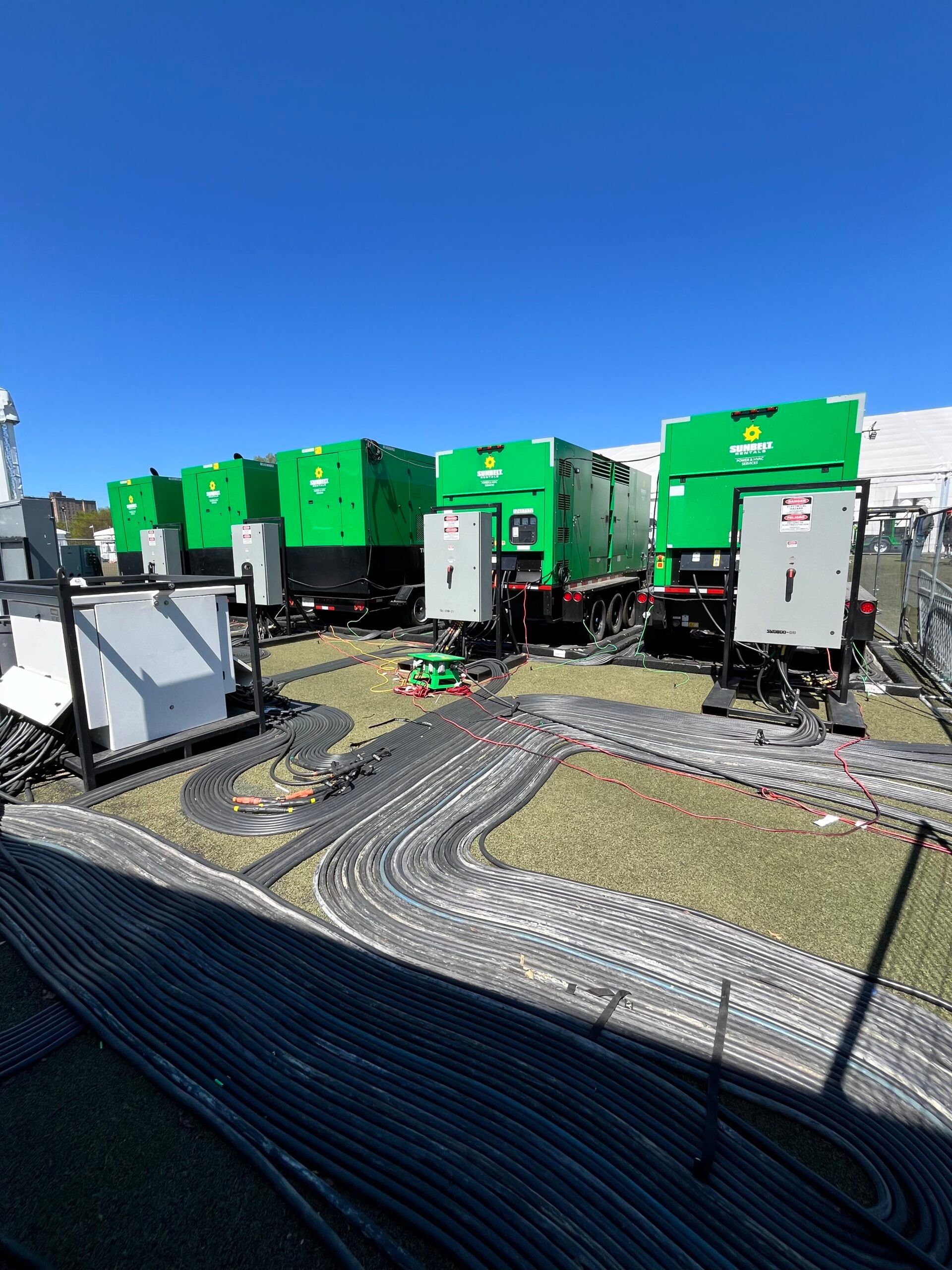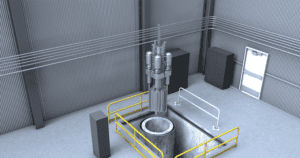
Industrial plant managers and utility operators face a common problem: power requirements change constantly, but we’ve been treating them like they’re fixed. Grid infrastructure upgrades take time, and operations can’t stop. Resiliency mandates require redundancy, but dedicating capital to assets that sit idle 90% of the year doesn’t make financial sense. And periods of peak demand? They need intelligent management, rather than simply oversizing power capacity.

This mismatch between static solutions and dynamic demands costs organizations millions every year. A pharmaceutical plant that is commissioning new production lines experiences wildly different power loads during equipment startup versus steady-state operations and varying seasonal loads. Or a utility that is performing maintenance on a substation needs backup power to maintain voltage and frequency stability under constantly shifting conditions. Different scenarios, same fundamental need: power solutions that adapt when operational requirements change.
THE INNOVATIVE SOLUTION: MANAGED POWER THROUGH EMaaS™
Energy Management as a Service (EMaaS™) treats temporary power as a complete managed ecosystem. It’s monitored, optimized, and actively adjusted to meet specific operational requirements as they change in real time. Instead of deploying standalone equipment, EMaaS™ delivers the most efficient load transfer whenever you need it — supplementing utility power, providing power where infrastructure doesn’t exist yet, or bridging capacity gaps during transitions.

3 CHARACTERISTICS THAT DEFINE ENERGY MANAGEMENT AS A SERVICE (EMaaS™)
Comprehensive Load Analysis
Most traditional approaches match panel size to perceived demand. EMaaS™ goes deeper, analyzing actual load profiles to understand demand patterns, the gap between peak loads and steady-state requirements, and where equipment operates most efficiently. A facility pulling 1,000 amps during motor startups but only 200 amps during normal operations doesn’t need equipment sized for that peak moment. It needs a right-sized solution.
Advanced Real-Time Monitoring
Telematics give you real-time data on fuel consumption, load demand, voltage stability, frequency control, and how efficiently the system’s running. With that information, you can get ahead of problems instead of reacting to them.

Specialized Expertise
Machine intelligence handles remote load management. Routine tasks like filter changes, fuel management, and scheduled maintenance get optimized. Complex requirements, from voltage transformation to grid synchronization, shift from your site teams to EMaaS™ service providers with the technical know-how these situations demand.
WHY ORGANIZATIONS ARE ADOPTING EMaaS™
Capital Preservation
Reliable backup and bridge power aren’t optional. But dedicating $2-5 million to equipment that sits unused for most of the year conflicts with nearly every capital allocation priority. Industry analysis often estimates that owning standby equipment only becomes economically justifiable when utilization exceeds 900 hours (112 days) or more per year. Below that threshold, utilizing rental equipment through the EMaaS™ approach typically delivers comparable or better economics while eliminating the risk of utilizing outdated technology.
Data-Driven Operations
Modern facilities run on continuous data streams to optimize performance. EMaaS™ extends this approach to temporary power, transforming it from “set and forget” to actively managed systems. During a six-month grid upgrade, machine intelligence might identify that switching from two 500kW generators to one 1MW unit improves fuel efficiency and reduces in-use emissions. Or it could detect voltage irregularities signaling maintenance needs weeks before equipment failure. The result: optimized power utilization with lower operational costs.
Operational Complexity
Power requirements today extend well beyond capacity provision. Planned substation maintenance might demand backup power capable of islanding critical loads while maintaining voltage stability, managing multiple connection points, and ensuring seamless grid resynchronization.
CRITICAL APPLICATIONS FOR INDUSTRIAL AND UTILITY OPERATIONS
Bridge Power for Infrastructure Transitions
Grid upgrades, substation replacements, and switchgear modernization require maintaining operations while transforming permanent infrastructure. That’s typically 3-6 months of continuous power with the same reliability expectations as permanent systems. EMaaS™ handles this through continuous management: configurations adjust as infrastructure work progresses, voltage steps up to transmission levels for utilities, and progressive load transfers get managed for industrial facilities. The result? Valuable risk mitigation.
Resiliency and Redundancy
Regulatory requirements increasingly demand redundancy and grid disturbance resilience. Building permanent backup systems for every contingency isn’t economically viable. EMaaS™ provides strategic redundancy when and where you need it. Pre-position capacity before hurricane season. Establish backup for planned maintenance windows. Provide insurance for critical processes where brief interruptions mean lost production runs. The result is resilience at a fraction of permanent infrastructure cost, with no capital tied up in rarely used equipment.
Island Mode Operations
Operating independently from the grid requires voltage and frequency control, load management, and seamless resynchronization. EMaaS™ providers manage these complexities through advanced control systems that maintain stable operation during grid independence while intelligently balancing capacity against demand. For organizations exploring permanent microgrid integration, temporary EMaaS™ deployment functions as a testing ground. You can validate operational approaches before committing to permanent infrastructure.
EVALUATING EMaaS™ FOR YOUR ORGANIZATION
If your organization is considering EMaaS™, assess your readiness across these dimensions:
- Application duration and complexity: Projects running 90+ days with changing load profiles justify managed approaches more clearly than simple 2-week installations.
- Operational risk tolerance: Facilities where interruptions create significant financial or operational consequences benefit most from continuous monitoring.
- Internal capabilities: Organizations without specialized temporary power expertise gain more value from EMaaS™’s technical support.
- Capital allocation priorities: Constrained budgets or high-return alternative investments favor shifting to managed services.
- Existing power sources: Effective implementations manage these sources as integrated ecosystems, intelligently balancing them based on availability, efficiency, and cost. In specific applications with extreme load variability, Battery Energy Storage Systems (BESS) can manage brief peak loads without cycling additional generation capacity.

The transition from equipment-centric to service-centric temporary power reflects broader industrial trends toward managed services and capital efficiency. Organizations beginning evaluation should identify one or two applications where EMaaS™ advantages align with operational requirements. Build understanding and confidence first, then expand.
READY TO OPTIMIZE YOUR TEMPORARY POWER SOLUTION?
The Sunbelt Rentals Power & HVAC Services team has the expertise and technology to deliver Energy Management as a Service (EMaaS™) tailored to your specific requirements.
Contact a rental expert or visit sunbeltrentals.com to learn how we can optimize your power operations.








